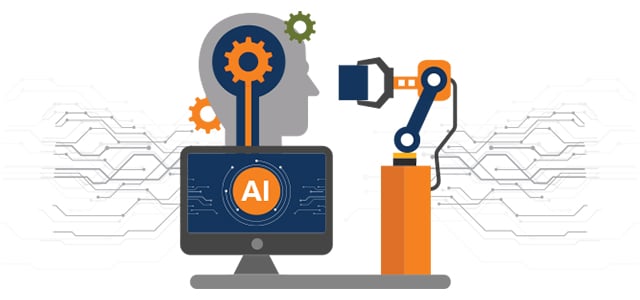
Smartphones, smart speakers, smart cars, smart coffee makers - everything around us is coming to life and becoming intelligent. Advanced technology like artificial intelligence (AI) and machine learning (ML) fuels the most exciting innovations of today, from self-driving cars and virtual / augmented reality to automated investing and improved medical imaging.
As this technology becomes more commonplace in high-stakes industries (like the auto, medical and finance industry), it’s vital that DevOps teams take a strong approach to QA testing. Even the smartest algorithm must undergo thorough AI testing to ensure that the public’s safety, livelihood or personal data aren’t at risk.
So, what’s the best way on how to test artificial intelligence applications? We recommend first sharpening your understanding of QA for AI, then creating a strong AI testing strategy designed to safeguard the end-user experience and the health of your AI product.
Types of Artificial Intelligence
Though the terms are often used interchangeably, there are key differences that differentiate testing artificial intelligence systems from testing ML applications:
| Artificial Intelligence | Machine learning |
|---|---|
|
Applies knowledge or skills
|
Gains knowledge or skills over time
|
|
Prioritizes success over accuracy
|
Prioritizes accuracy over success
|
|
Simulates natural intelligence
|
Learns continuously from a set of data
|
|
Simulates human responses to problems
|
Creates continuously learning algorithms
|
|
Searches for the optimal solution
|
Searches for any solution, whether optimal or not
|
Artificial intelligence refers to a system performing tasks in a way that we humans might consider smart or efficient, while machine learning is automated, continuous self-training performed by a system that leverages pre-existing data.
In just how many ways can an AI system showcase its smartness? Let’s explore these four ways that a system or machine can exhibit AI behavior:
-
Reactive Machines: This type of AI system has neither the ability to form memories or rely on past experiences for insight on current scenarios. Instead, reactive machines perceive the world objectively and act in the present moment.
Examples: IBM’s Deep Blue, Google’s AlphaGo -
Limited Memory: These machines can look into the past and apply previous observations towards its pre-programmed understanding of the world. Keep in mind that past reference for this type of AI system is brief and not saved into the system’s library of experience.
Examples: self-driving cars, chatbots, virtual assistant technology -
Theory of Mind: This type of AI system works to understand the humans, animals and/or objects within its interaction by perceiving their needs, emotions, beliefs and thought processes. These machines must learn rapidly in order to keep up with rapid shifts in emotional and behavioral patterns of humans as is common in social interactions.
Examples: Kismet, Sophia -
Self Aware: A fully-conscious machine or system is aware of themselves, recognizes their internal states and can predict feelings of others. Furthermore, a self-aware AI machine can think for itself, have desires and understand its internal feelings. This type of AI system is not yet in existence.
Primary AI Use Cases
By employing artificial intelligence tools and techniques on IoT-connected data sources, enterprises across industries have increased ROI without sacrificing quality or accuracy. These AI use cases further illustrate the beneficial impact of artificial intelligence within industrial markets.
- Predictive Maintenance: The goal of this AI use case is to predict when maintenance needs to be performed. AI can determine the condition of a single asset or an entire set of assets by making use of advanced analytics, sensor readings and external data sources.
- Automated Optical Inspection: In this technique, a camera autonomously scans the device under review for any disastrous failure and/or quality weaknesses. Manufacturing facilities rely on this AI use case to apply computer vision that recognizes and classifies images.
- Manufacturing Process Optimization: This use case sets up autonomous machines or robots to replicate human tasks while achieving performance accuracy. Neural networks act as the “brain” of these AI machines and human supervision is necessary during the implementation phase of its industrial application.
- Supply chain optimization: In this AI use case, artificial intelligence can improve inventory management by leveraging predictive analytics across an array of inventory-associated tasks, from reducing inventory cost and planning time to optimizing repairs and streamline reorders. AI techniques such as time-series analysis and probabilistic modeling are often applied for these types of artificial intelligence use cases.
Primary ML Use Cases
It seems there are endless ways to apply algorithms and statistical models for teaching a computer system how to perform tasks unsupervised. Before testing ML applications, discover how these machine learning use cases are transforming how we do business across industries and markets.
- Customer Service Automation: Many companies turn to machine learning in order to scale online customer support during peak seasons or to handle increase in business. Through ML algorithms, chatbots and automated communication systems can handle routine and low-priority tasks so that employed agents can concentrate on high-level customer service scenarios.
- Cybersecurity: Because of IoT technology, cyberattacks can happen anywhere at any time in any form. Predictive analytics in machine learning can identify possible threats sooner and remove the treat faster than ever. ML algorithms can also track user behavior within a network to spot irregularities and vulnerabilities within existing security infrastructure.
- Object recognition: Many machine learning applications can understand what they’re seeing and respond appropriately. Self-driving cars can recognize surrounding cars and retail stores speed up the checkout process with camera detection.
- Fraud Detection: Many banks and credit card companies choose machine learning algorithms to review endless amounts of transactional data in order to identify suspicious activity. Machine learning has expedited the fraud detection process by spotting fraud faster and more accurately than manual review.
How To Test Artificial Intelligence Applications
Challenges and Potential Complications
-
Problem: Huge volumes of collected data is time-consuming to scrub and difficult to store.
Solution: Automate data matching within the AI system so that data is classified and stored more efficiently. Update the machine’s ML algorithm so that it can identify and integrate all collected data through predictive analytics. Consider your cloud computing options for mass data storage. -
Problem: Data may be collected during unanticipated events or circumstances, making it difficult to gather and use for training purposes.
Solution: Revise your programmed algorithm within the AI machine to re-classify collected data during these unexpected events so the AI system recognizes this set of data as unconventional behavior during training. -
Problem: Human bias may appear in training and testing data sets.
Solution: Implement technical tools and operational practices designed to analyze the objectivity of data sets. Program your AI machine during training sessions to provide data checkpoints so that manual review of data analysis can confirm no human bias is at play before proceeding with the process. -
Problem: Defects quickly fester and grow more complex in AI systems.
Solution: Map out in detail all expected behavior of the AI machine and adjust test cases to match new understanding. Strengthen regression testing practices within the development cycle.
Key Aspects of Testing
-
Data Validation
The key to successful AI testing is good data. Before testing artificial intelligence systems, your team should scrub, clean and validate your data. Be wary of human bias and variety that can complicate the system’s interpretation of the data - think of a car navigation system or smartphone assistant trying to interpret a rare accent.
-
Principle Algorithms
At the heart of AI is the algorithm, which processes data and generates insights. Some common algorithms relate to learnability (the ability of Netflix or Amazon to learn customer preferences and serve new recommendations), voice recognition (smart speakers), and real-world sensor detection (self-driving cars).
A strong AI testing strategy should thoroughly review model validation, successful learnability and algorithm effectiveness. Any issue with the algorithm can lead to more serious consequences down the road.
-
Performance and Security Testing
Just like any other software platform, QA for AI systems requires intensive performance and security testing as well as regulatory compliance testing. Niche security breaches - from chat bot manipulation to using voice recordings to fool voice recognition software - become more common without proper AI testing.
-
Systems Integration Testing
Keep in mind when testing artificial intelligence systems that AI machines are built to hook into other systems and solve problems in a much larger context. Seamless, functional integrations require a complete assessment of the AI system, including its various connection points, during AI testing.
Testing Machine Learning Systems
The goal of ML systems is to acquire knowledge on their own without being explicitly programmed. This requires a consistent stream of data to be fed into the system - a much more dynamic approach that traditional testing is based on (fixed input = fixed output). Because of this, QA experts must think differently about testing ML applications when creating their AI testing strategy.
-
Training Data and Testing Data
QA for AI testing relies on training data, the set of data that trains the system’s model. In this data set, the input data is supplied along with the anticipated output. This is typically prepared by collecting data in a semi-automated way.
Testing data is a subset of the training data, logically built to test all the possible combinations and determine how well your model is trained. The model can be fine-tuned based on the results of the test data set.
-
Model Validation
Testing AI applications must include test suites designed to validate the system’s model. The principal algorithm analyzes all of the data provided, looks for specific patterns and uses the results to develop optimal parameters for creating the model. From there, it is refined as the number of iterations and the richness of the data increases.
-
Communicating Test Results
QA engineers can express the results of an AI testing strategy in terms of quality, such as defect leakage or the severity of defects. But the validation of models based on machine algorithms only produce approximations - not exact results. The engineers and stakeholder must determine the acceptable level of assurance, within a certain range, for each outcome.
Are You Ready for AI Testing?
Testing ML applications and AI systems depends upon a unique approach to testing not familiar to many QA engineers. There’s a high demand to keep data sets diverse, dynamic, and constantly refreshed while implementing robotic process automation for AI within QA practices. All of these essential expectations can be overwhelming to QA testers that are still learning how to test AI applications.
Enjoy the benefits of QA for AI without the onboarding investment by partnering with a reliable QA services provider like QASource. Our team of testing experts have years of experience in AI testing so that your team can achieve rapid efficiency while maintaining test case accuracy and scalability. Get a free quote today.




